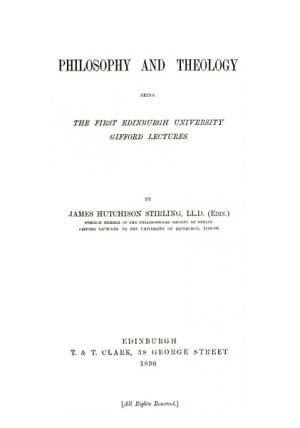James Hutchison Stirling published Philosophy and Theology in 1890. It is a compilation of the 20 Gifford lectures he delivered as the first Gifford Lecturer at the University of Edinburgh. These lectures discuss the questions: What is Natural Theology? And are there proofs of God’s existence? Stirling traces what he calls “arguments from Design” from Anaxagoras, Socrates, Plato and Aristotle, through various Middle Age Christian and Eastern/Indian philosophers, up to presentations of the argument found in the writings of David Hume, Immanuel Kant, and Charles Darwin. Stirling argues the “order”, or harmony, we find in nature implies a Designing mind. Contrary to Hume’s argument that ideas follow from the empirical world, Stirling believes an Idea – God’s Idea, or the nous – is the progenitor of the entire empirical world. Stirling sees Idea (a divine plan) as pre-existing, and as discoverable within, all natural phenomena.
Philosophy and Theology
1889
University of Edinburgh
Books
Philosophy and Theology

Edinburgh
T & T Clark
1890
In his Gifford Lectures, Stirling says his objective is to fulfil Lord Gifford’s own religious aim – to seek proofs of the existence of God. Stirling starts his lectures by defining Natural Theology as being precisely this task – to “know” religion: “We not only feel, we know, religion. Religion is not only buoyed up on a sentiment of the heart, it is founded also on ideas of the intellect.” For this reason, Stirling holds in high regard Kant’s belief in the existence of à priori truths.


